Kingdom Animalia Subfamily Gomphocerinae Scientific name Chorthippus parallelus Higher classification Chorthippus Order Orthoptera | Family Acrididae Genus Chorthippus Phylum Arthropoda Rank Species | |
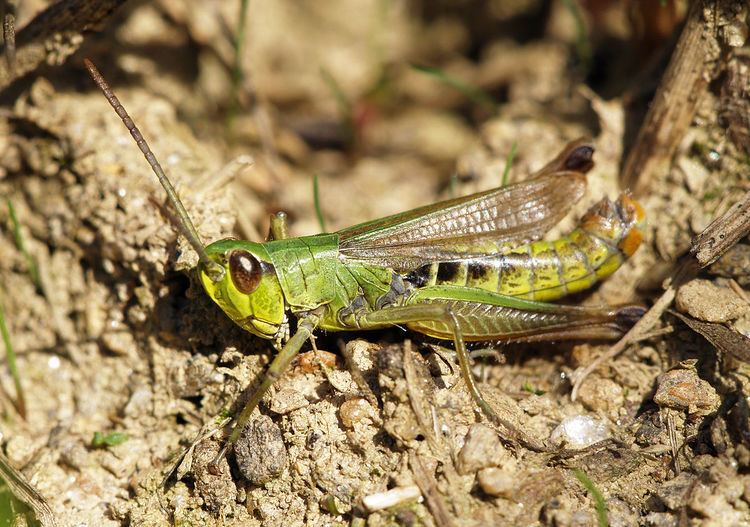 | ||
Similar Chorthippus, Grasshopper, Orthoptera, Insect, Chorthippus brunneus | ||
Meadow grasshopper chorthippus parallelus female purple form
Chorthippus parallelus, the meadow grasshopper, is a common species of grasshopper found in non-arid grasslands throughout the well vegetated areas of Europe and some adjoining areas of Asia. It is a well-studied organism in the discipline of Evolutionary biology and was an early and important model system for the study of European phylogeography.
Contents
- Meadow grasshopper chorthippus parallelus female purple form
- Meadow grasshopper chorthippus parallelus gemeiner grash pfer
- Distribution
- Physical appearance
- Possible utilization for human food
- Geographic races
- References
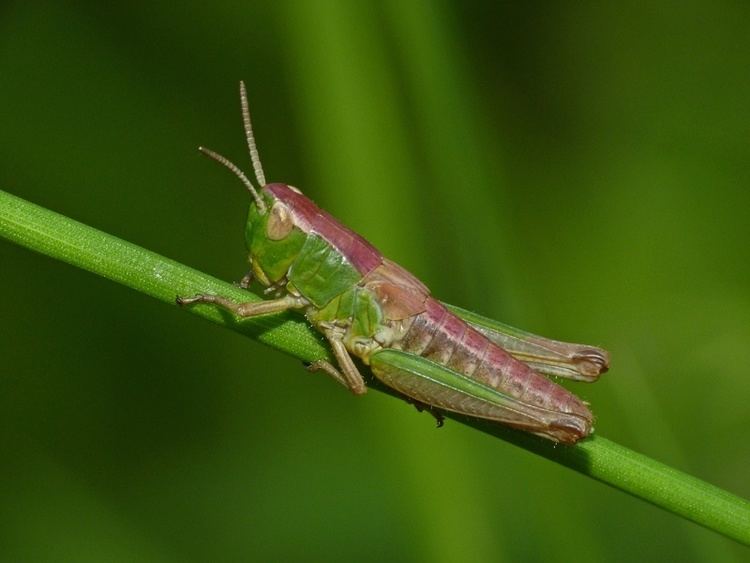
Meadow grasshopper chorthippus parallelus gemeiner grash pfer
Distribution
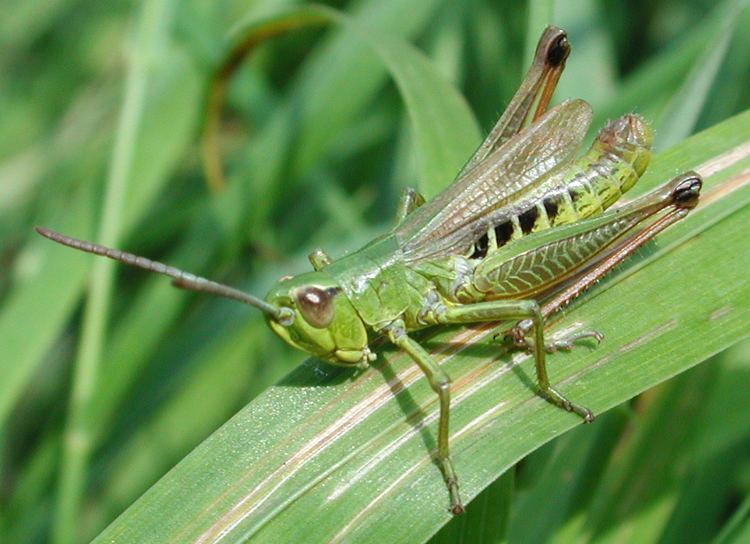
The range of the Meadow Grasshopper extends from the Atlantic coast of Europe to the Urals. It is found from Scandinavia in the north to southern Spain and Anatolia in the south. It prefers moist vegetation and in southern regions is typically found in river valleys and at altitude (up to approx 2000m), not being found in arid areas.
Physical appearance
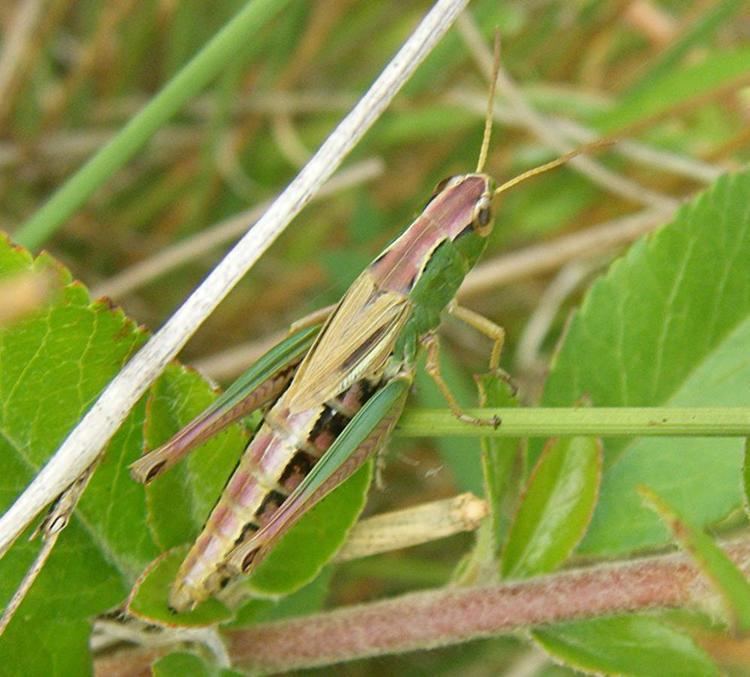
Females grow to approximately 2 cm and are larger and less active than males that grow to approximately 1.5 cm. Both sexes are flightless. In females the wing cases (covering vestigial wings) extend only a short way down the abdomen while males have longer wing cases extending to almost the tip of the abdomen. They can be variable in colour with green, brownish, purple-red and pink forms recorded, although green forms are most common. Colour forms are genetically determined and some populations can show high frequency of pink grasshoppers. Chorthippus parallelus is told from similar species by the approximately parallel nature of the bars (pronotal side-keels) on the back of the neck which gives the species its name.
Possible utilization for human food
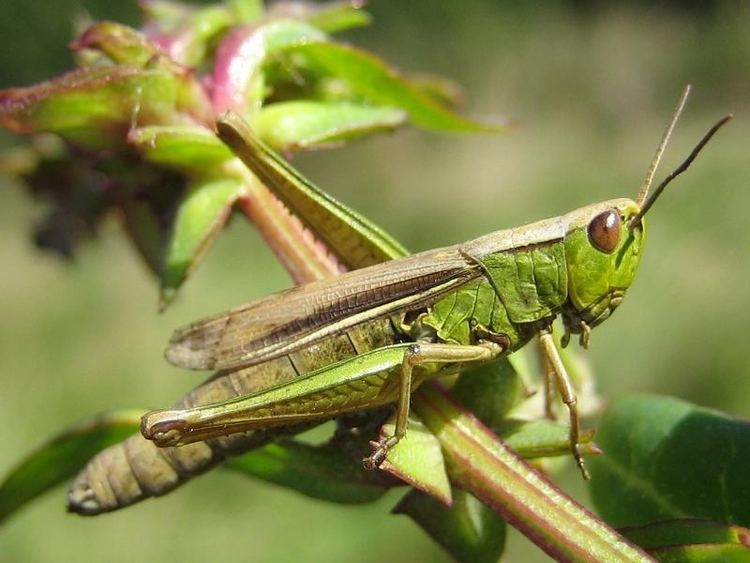
Due to high densities of these insects in Western Europe, some researchers have also proposed there possible utilization as human food. These insects contain 69% proteins on dry weight with excellent amino acid profile and digestibility. Aman Paul and his co-workers indicated that before introducing these insects for human food, it is necessary to do a thorough examination of any possible toxic and/or allergic conditions that could arise from there consumption.
Geographic races
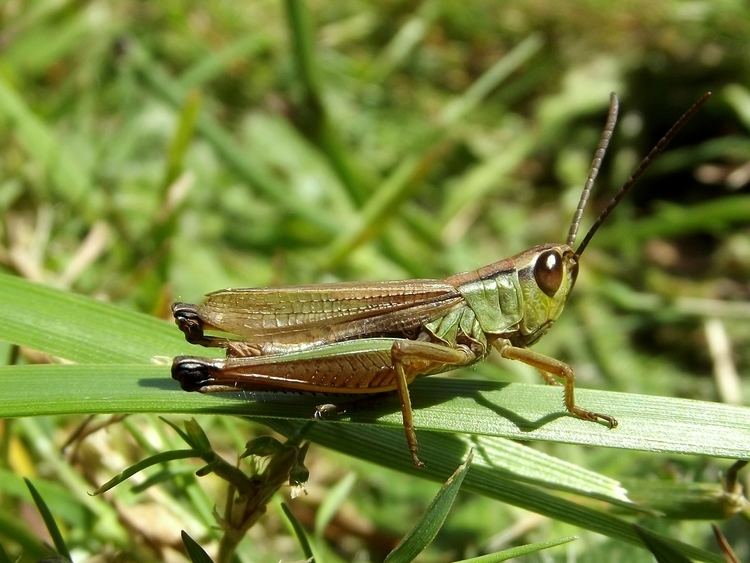
There are at least five races of the meadow grasshopper described in different regions with the Greek (C.p.tenuis), Iberian (C.p.erythropus) and central European (C.p.parallelus) forms described as separate subspecies. These subspecies are the result of the allopatric separation of Chorthippus parallelus populations into separate southern European refugia during the Pleistocene ice ages.
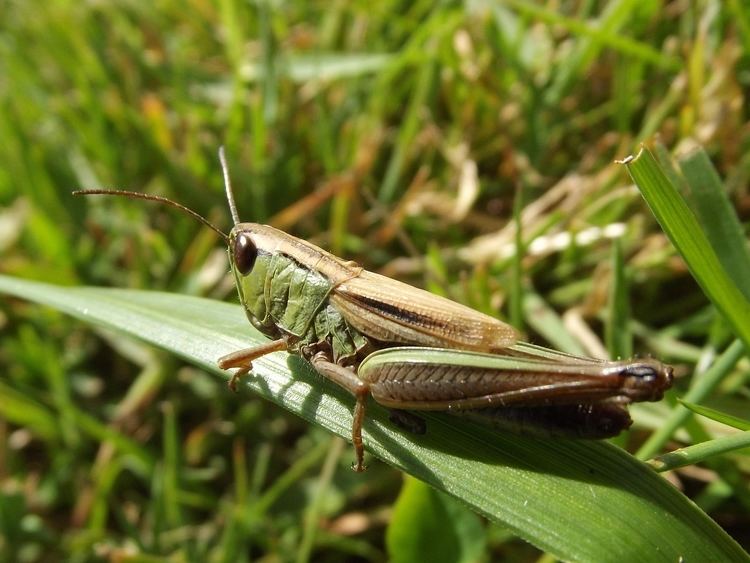
The most widespread subspecies, C.p.parallelus, is found throughout much of Europe but is replaced by C.p.erythropus in Iberia. The Iberian erythropus subspecies is characterized in the field by red hind tibiae and differences in the mating song although other studies demonstrate additional differences in morphological, behavioural, chromosomal and DNA sequence characters. There is a hybrid zone between C.p.erythropus and C.p.parallelus running along the ridge of the Pyrenees mountains between Spain and France. A similar hybrid zone has been described between forms in France an Italy that runs along the Alps.
